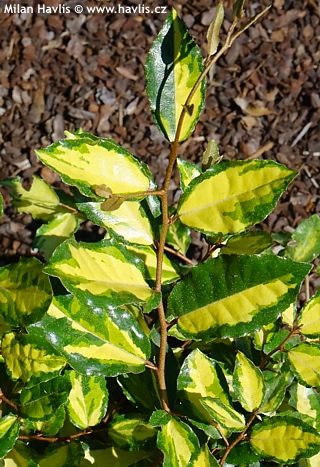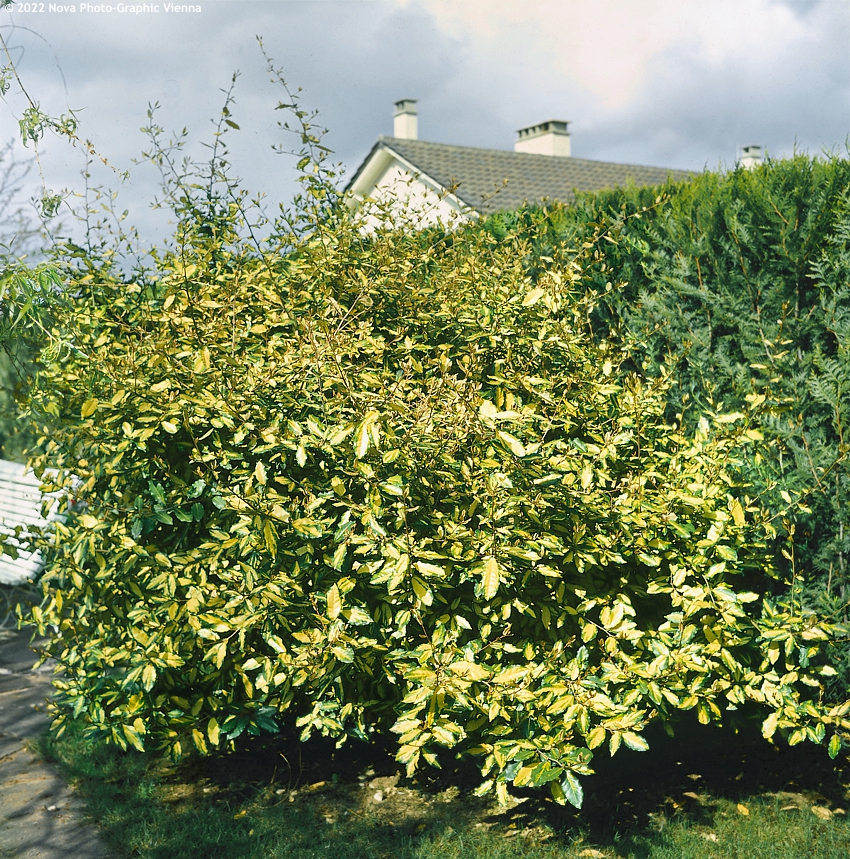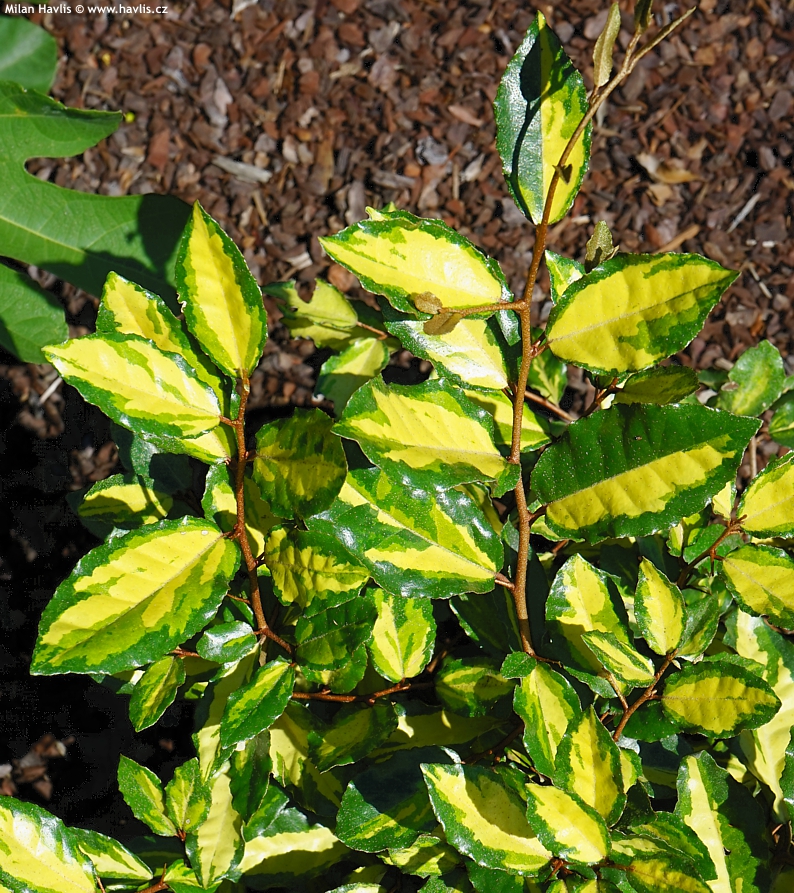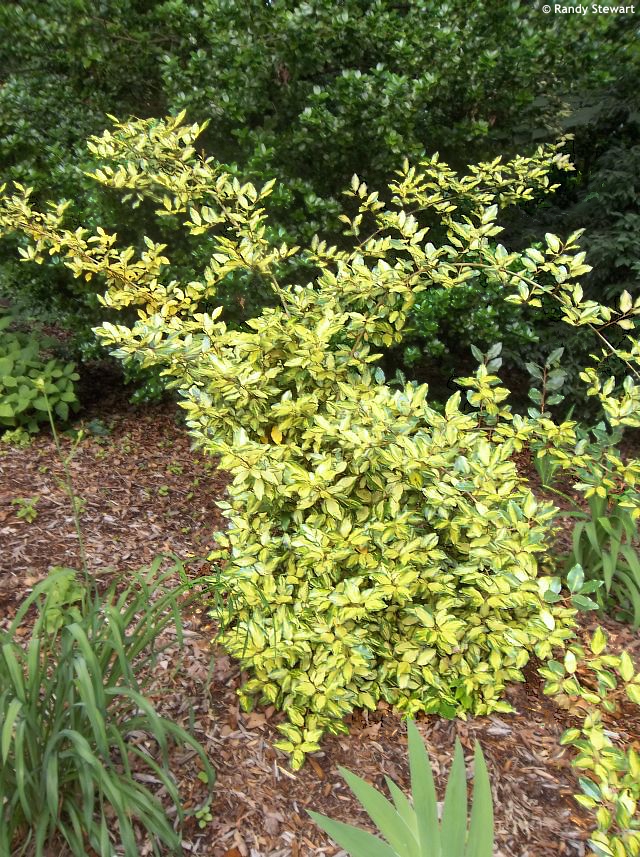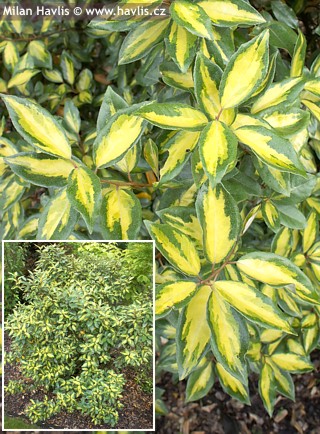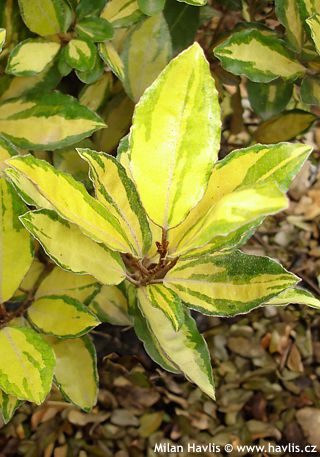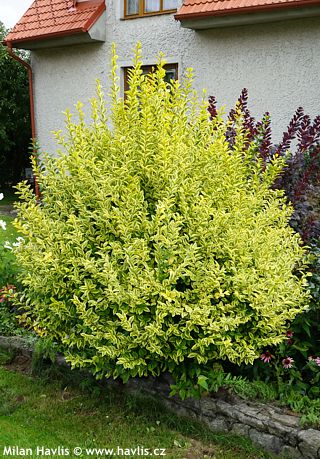Elaeagnus pungens 'MACULATA' silversthorn, thorny olive
Elaeagnus
Thorny olive is a Japanese taxon and an evergreen species of silverthorn. It features large and in case of cultivated varieties mostly coloured foliage and 2-3 cm long thorns scattered along the twigs. In their natural habitat they were used especially in hedges as a natural barrier against animals. There are a few varieties that differ in leaf colour and habit, and in gardens down to USDA zone 6 they are grown more for their ornamental value than its prickly utility. It grows fast and responds well to pruning.
Maculata is a thorny olive variety with utterly handsome foliage. The evergreen leaves are leathery, broadly oval/ovate, glossy, up to 10 cm long, deep yellow in the centre and dark green at margins with some light green highlights. Young leaves are pale brown and decorated with stardust-like dots before they mature. They are silvery on the reverse. In autumn, in the axils of the leaves, are borne inconspicuous, white, and strongly and sweetly scented flowers which are usually not followed by fruit.
Thorny olive grows fast, still, Maculata variety does not go that wild when it comes to annual growth. It forms a rather prostrate shrub, somewhat irregular in shape with some upright branching, and in 10 years it can be around 1.5 meter tall and slightly over 2 meters wide. Just like every evergreen silverthorn, the branches of Maculata, too, often reverse to its original genotype with solely green leaves. These need to be removed as soon as spotted because they are more vigorous than the coloured ones and might uncontrollably dominate the bush.
Silverthorn can be pruned in almost any manner at almost any time from spring till autumn. It is soil adaptable as it can fix nitrogen from atmosphere and distribute it to its roots. It only needs good winter mulching in our climate to protect surface roots from heavy frost. It will not live in boggy and wet conditions. This is a tough plant that is even grown in the warmest parts of Siberia, and if it manifests some damage after a harsh winter it readily regenerates from healthy wood. It is tolerant of exposed conditions, salt, extreme heat and drought, and withstands windy areas. Hardy to min. -23 °C (USDA zone 6).
Last update 20-08-2022

































